It was on the map, but then so was Bisti De-Na-Zin, the place our itinerary, planned weeks ago, had on our agenda for the day. That itinerary hadn’t considered the status of our legs and feet, conditioned by winter and Pandemic. After hiking trails the day before at the Petrified Forest, our feet and legs were jelly and sore.
We had researched Bisti fairly well. North from Gallup, New Mexico, through Ya-Ta-Hey, through Navajo lands followed by several miles over an unpaved dirt road to something resembling a parking area, two miles walk up an unmarked desert wash to a series of rarely visited, but spectacular hoodoo’s. Designated a wilderness area, it is off the beaten path for most visitors on a tour of the southwest. Normally the force of my enthusiasm carries the day and fortune delivers me from calamity. Jenny wasn’t having any of it today.
OK, now what?
That’s where El Malpais comes in. It was on the map. We had seen signs for it on I 40 two days before on the drive from Albuquerque to Gallup, where we were home basing out of for a few days. It was a National Monument. Not sure what I was expecting, but on the internet, Jenny read something about a rim road with scenic vistas. There didn’t seem to be many hiking trails. She was sold.
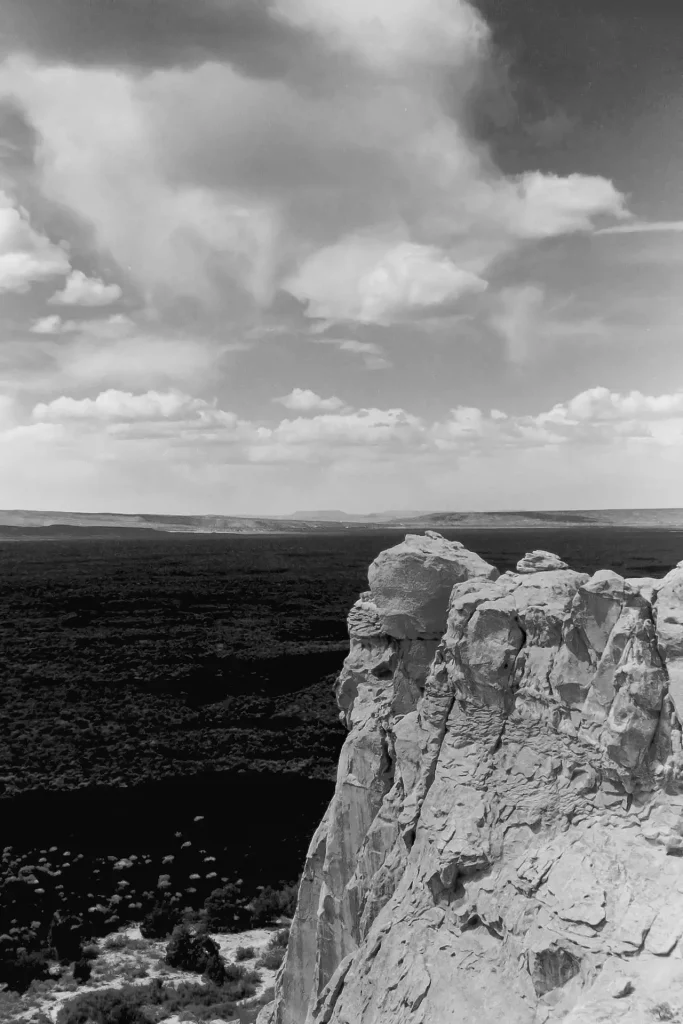
The previous day we headed west from Gallup to Arizona and the Petrified forest. Today we headed back East. As we approached, we had remembered this stretch of the road. The desert terra suddenly changed from a brown-ish orange sand derived from rain washed sandstone to rough jet black gravel and boulders. “How strange” I thought the first time through, I should come back here sometime when we had more days at hand.
At one of the exits for Grants, a quarter mile south of I 40, is the El Malpais NM visitor’s center. We stopped and went inside. We needed to know why destiny had brought us to this place.
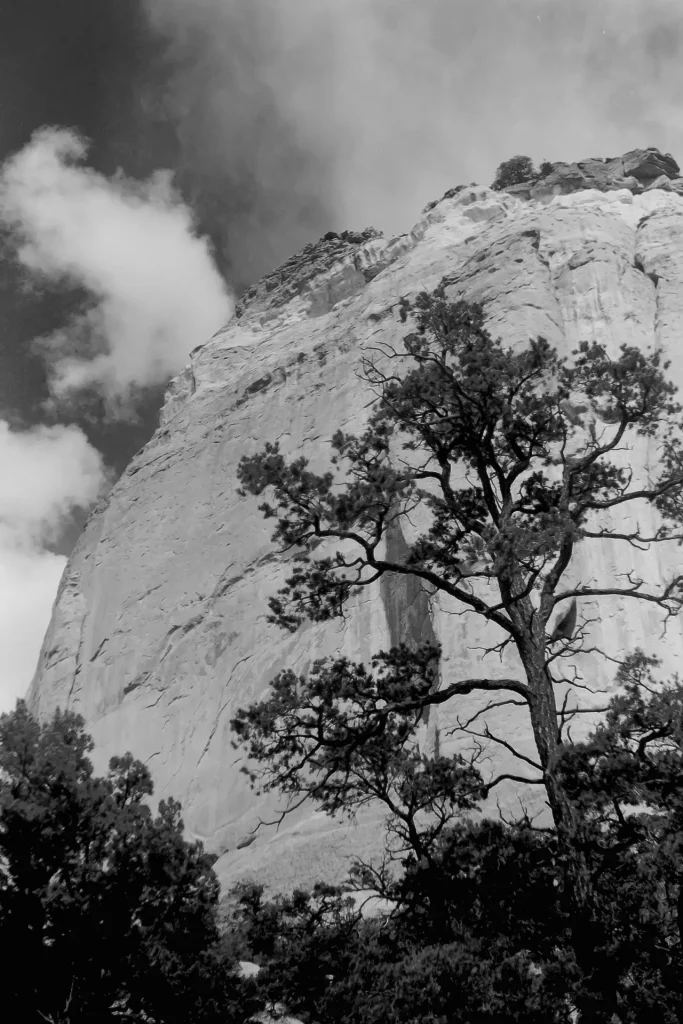
The visitor’s center was a large building of recent construction. We went inside to the foyer, on one side of the space there was a glass wall that extended edge to edge and to the ceiling. Behind it there was some sort of habitat with scenic displays, nick knacks, books, t shirts, magnets and funny hats. In the corner was a live specimen. Dressed in boots, khaki and with various embroidered markings on the shoulders it sat on a stool. Time stood still, for a moment that began to drift towards eternity we stared, it stared back at us. Then through the glass she asked, “Can I help you?”
Oh yeah! This was a Park Ranger. There was a pandemic going on. These were the protocols.
We hollered at each other through the glass. What was there to see and do etc. Apparently, El Malpais is a large lava field, having three substantial flows of lava through its history. She compared the active flows in Iceland going on at the time, but safer. The magna from 3900 years earlier had cooled. It was safe enough to build an interstate and a Walmart a mile to the north. Within the lava fields are several cinder cones formed from previous flows, as well as caves, tubes and falls created by the flow of lava. The lava fields are rimmed by tall scenic sandstone cliffs.
We thanked the captive Park Ranger for her help and decided to take the eastern route (NM 117) around the lava field. The afternoon, then setting sun would be advantageous on the sand stone walls. Many of the sights on the western rim (NM 53) were closed. Caves are problematic during airborne viral pandemics. We headed a few miles back east on I 40 to pick up the route.
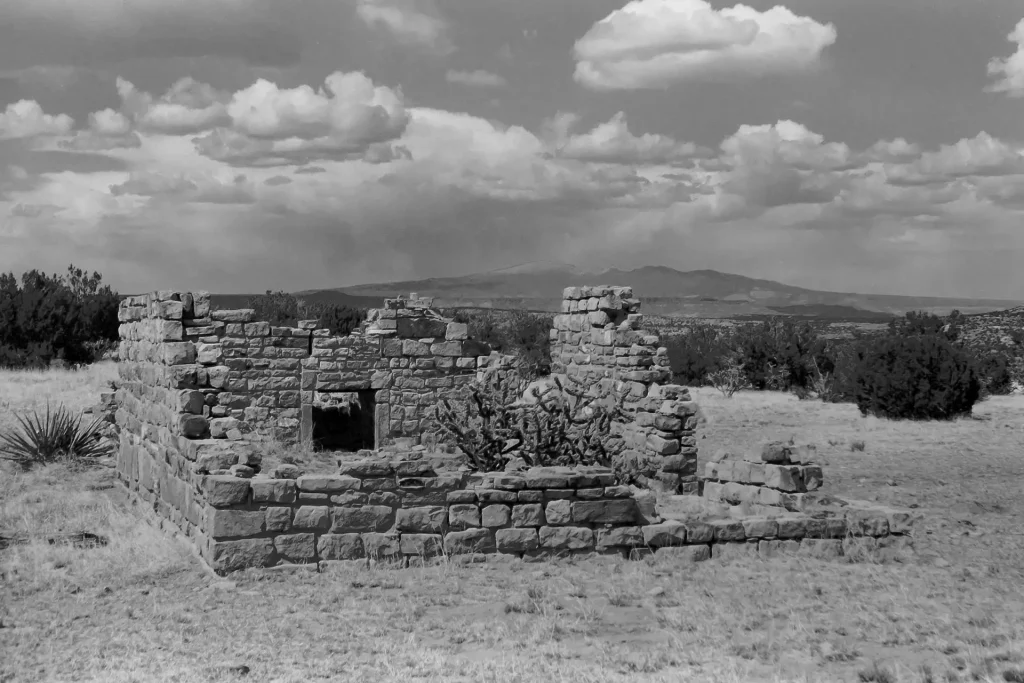
Early Spanish explorers came upon the area and called it El Malpais, the Badlands. The area is nowhere close to, nor does it resemble Badlands National Park, 1000 miles to the north in South Dakota. Comparing the two, the lands in South Dakota are beautiful but unwelcoming. Whereas, traversing these black and rocky lands with a late July sun must be pure hell. Fortunately, it was March.
Before we had left, I bought film for the trip. As always the camera was my late Uncle’s Petri 2.8. With the light I knew we would have, I picked up some rolls of Pan F. I had hoped that the slow speed and small grain structure would work well with a yellow filter for landscapes in a bright sun. Perhaps it did, but it is sort of hard to tell with my inexpensive scanner, the weak link of my analog work flow.
Initially, NM 117 sits atop the tall sandstone cliffs, and from a perch of several hundred feet, overlook the lava fields below. As it heads south there is a spur road to the cliffs edge, further south, it passes a settler’s ruin and then descends to the edge of the fields. Along the way it passes La Ventana natural arch.
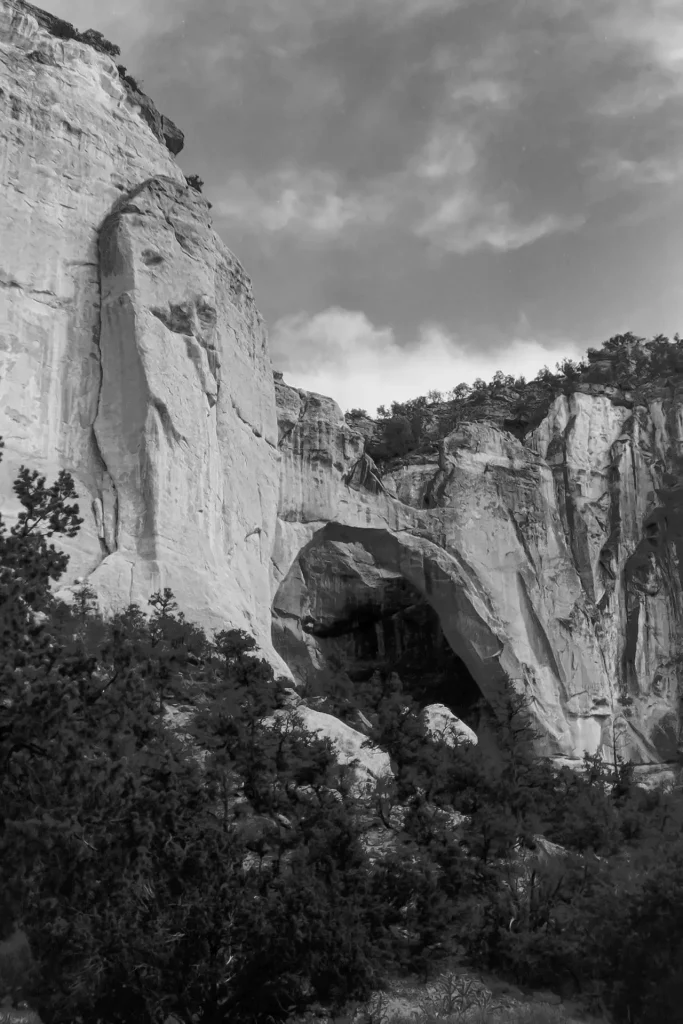
As we made our way south, clouds and then storms were seen on the horizon to the northwest. They began to brood over the lava fields and into the images I was making. By the time we reached the Lava Falls trailhead in the south, it was windy, and a nasty sprinkle of ice-cold darts was falling from the sky. There was a hike at hand, Jenny was trapped, she couldn’t get away.
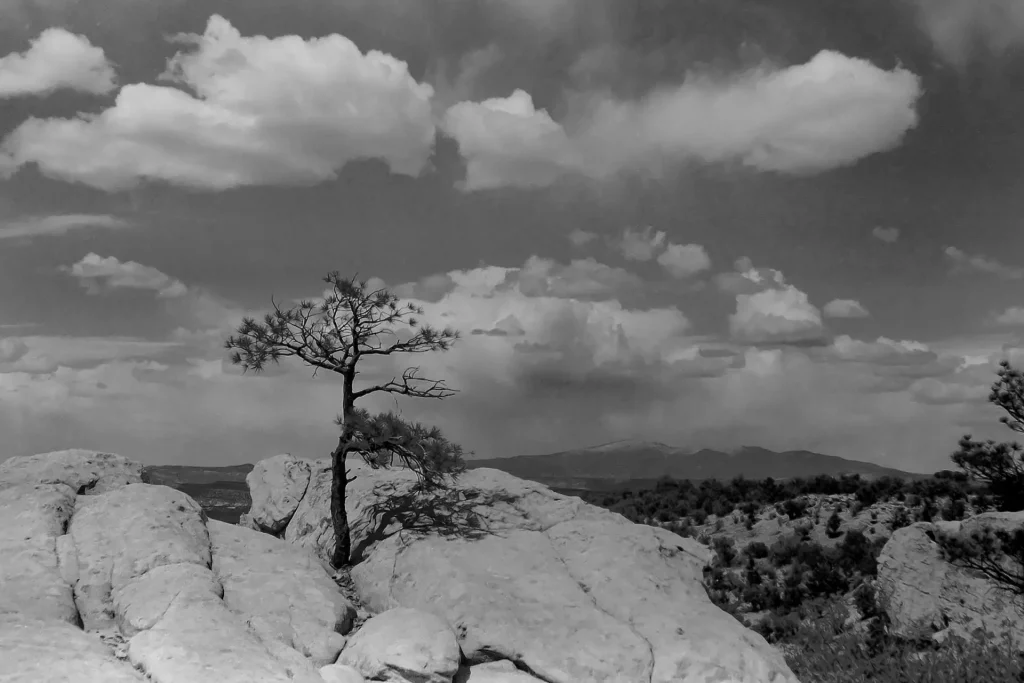
There were a few frames left on the roll of Pan F, but I put the Petri away. I didn’t want the heirloom to face the inhospitable conditions enveloping us. So I pulled out the OMD M1 and attached the 14 – 42 F2.8, my go to lens for hiking. Out onto the lava field we trekked.
The trail led to a large cinder cone. We crossed cracks in the lava that were a foot wide and descended into a deep dark place. The trail ascended to the top of the cinder cone, around the rim and onto the other side. From there, it approached where the lava had spilled out onto the plains to the north. After the lava flow cooled and set, erosion in the sand below created voids into which boulders crumble and fall. This made one of my favorite digital images from last year. I include it here to conclude the day’s journey.
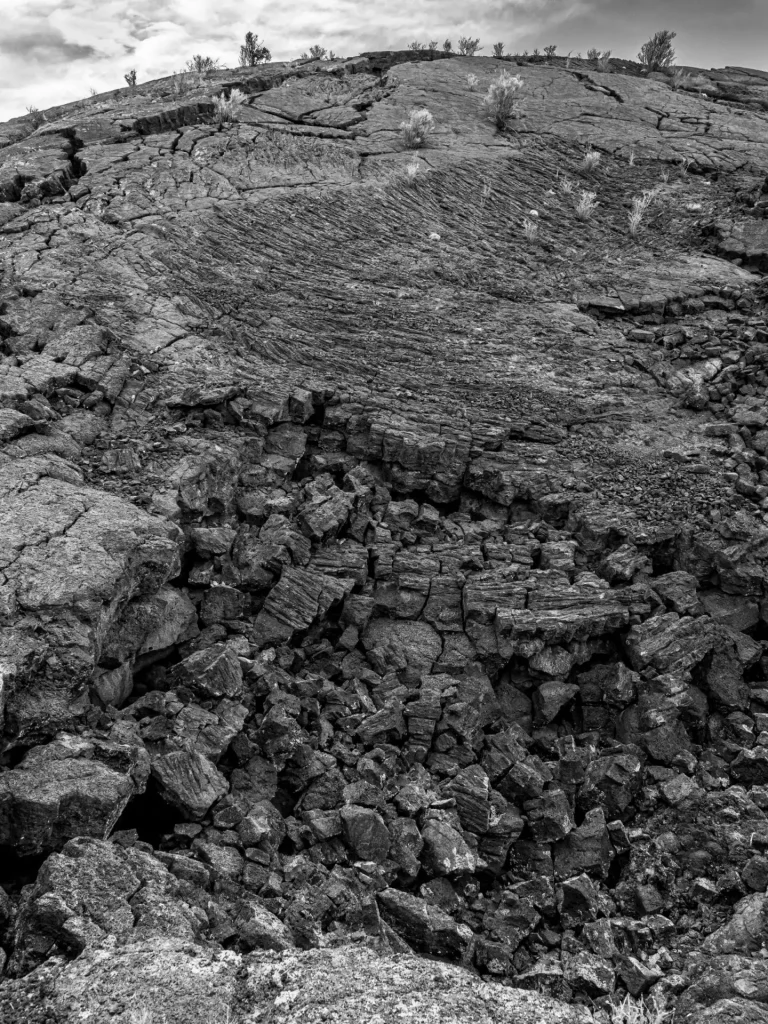
Things are a foot in New Mexico. Two and a half years ago, when we visited White Sands to the far southeast, it was a National Monument. Today it is a National Park. Currently, the lava fields of El Malpais are a National Monument, administered by the National Park service. The surrounding sandstone cliffs and mountains are part of El Malpais National Conservation area and administered by the Bureau of Land Management. The Monument’s recently constructed welcome center is unusually large and beautiful for either of these property types. We had the place to ourselves this day. We will be back and at some point in the future, I suspect we will be visiting a National Park.
You can also read Part 1 – the Painted Desert Inn
You can find me on my Site, Twitter and 500px
Share this post:
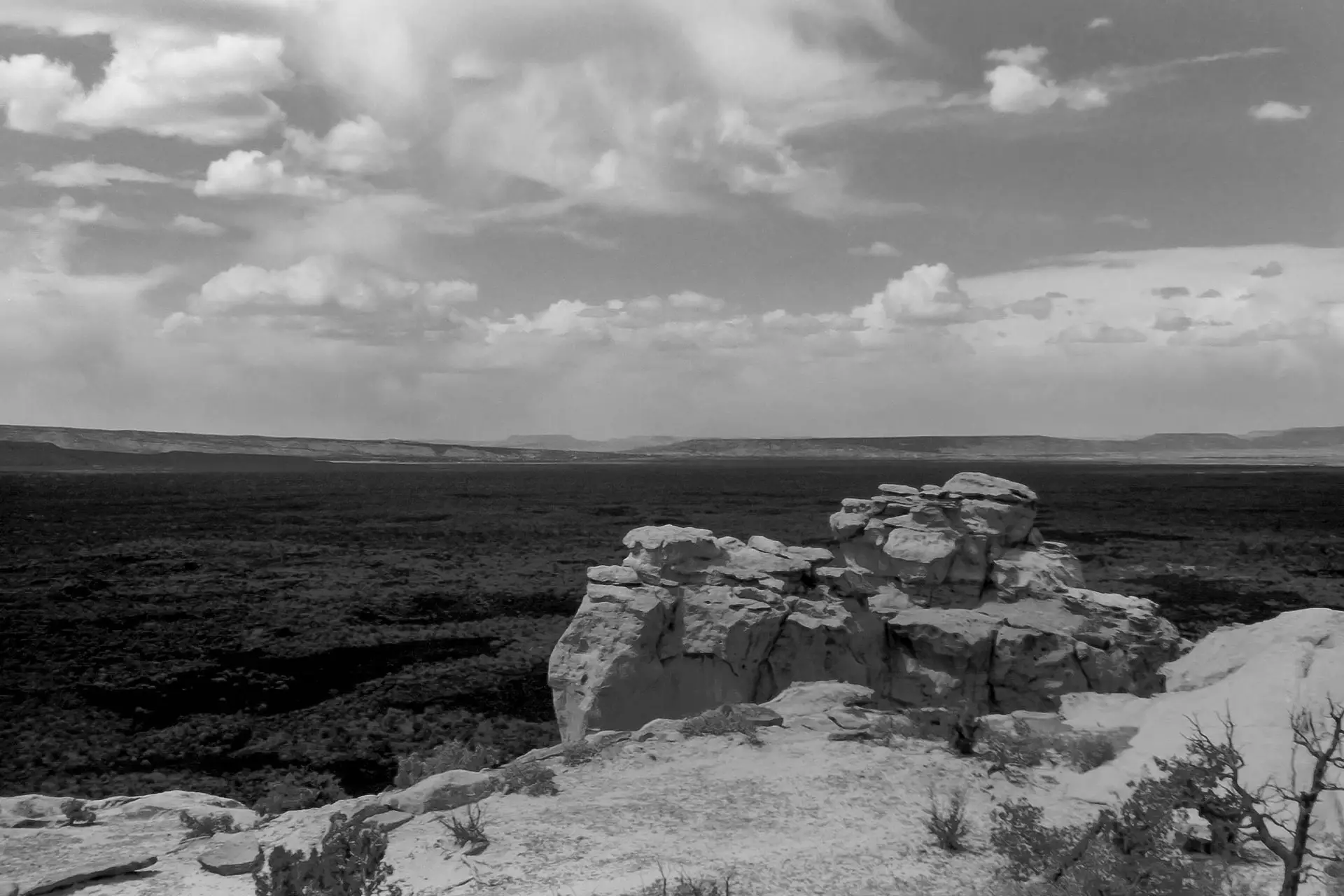








Comments
Jay Dann Walker on 3 Days, 3 Rolls of Film in the American Southwest: Pt 2 – By John Pemberton
Comment posted: 06/03/2022
On my first visit I shot mostly Kodachrome and cooler negative film. With a Pentax K1000 and a Macro Takumar. Second time around I had a Nikkormat with three lenses and my 1962 Rolleiflex, which I still own and use (the Pentax and Nikkormat long ago vanished from my life, sold as I traded up to my current Leica Ms and digital FF Nikons).
I still have all those negatives and slides. Even the color negatives have survived 40 years in surprisingly good condition, given I now live in Australia and we have such extremes of climate (not unlike New Mexicos', but thankfully, no snowfalls in winter!!). I must get them up and do a few printing sessions in my home darkroom.
As the old song goes, Thanks For The Memories... I will now read your second article, with the hope that it will be as interesting and informative as this one was.
JD in Melbourne, Australia
Comment posted: 06/03/2022
Scott Gitlin on 3 Days, 3 Rolls of Film in the American Southwest: Pt 2 – By John Pemberton
Comment posted: 06/03/2022
Comment posted: 06/03/2022